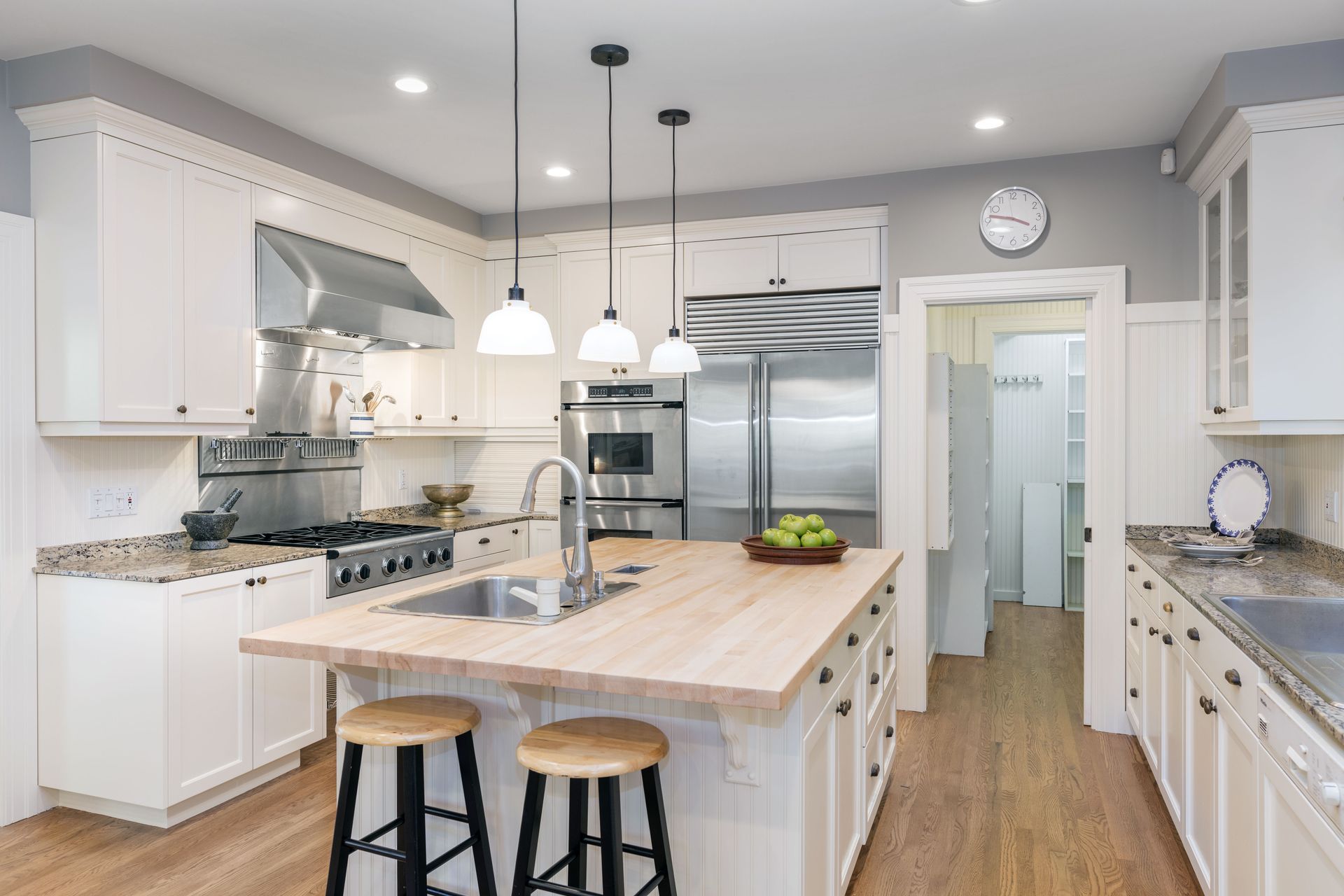What to Expect When Building a New Home From the Ground Up
Building a home from the ground up is a monumental task that involves numerous steps, meticulous planning, and careful execution. From envisioning the perfect design to moving into your dream space, the process requires a coordinated effort across various phases. This article provides a comprehensive guide to understanding what to expect on this journey, making it easier to navigate and manage each stage effectively.
1. Pre-Construction Planning
a. Budgeting and Financial Planning
The first step in building a new home is establishing a realistic budget. This involves considering both immediate construction costs and long-term financial commitments. It's crucial to account for all expenses, such as materials, labor, permits, and unforeseen contingencies. According to HomeLight, the typical cost of new home construction is about $150 to $200 per square foot, underscoring the need for thorough financial planning. By setting a budget early, you can avoid potential financial pitfalls and ensure that your project remains on track.
In addition to construction costs, future homeowners must consider financing options such as construction loans or mortgages. Working with financial advisors or lenders can provide clarity and guidance on the best strategies for securing funds. Understanding loan terms, interest rates, and repayment plans is crucial for aligning financial capacities with construction aims. With appropriate financial planning, you can maintain economic stability throughout the building process.
Effective budgeting also involves prioritizing wants versus needs. While it's tempting to incorporate every dream feature, it's important to differentiate between must-haves and nice-to-haves. Creating a clear financial roadmap with room for adjustments allows flexibility without compromising key elements of the construction. As the project unfolds, sticking to the defined budget ensures that every decision made contributes to the overall vision and functionality of the home.
b. Selecting a Suitable Location
Choosing the right location for your new home sets the foundation for lifestyle and living standards. Proximity to essential services such as schools, medical facilities, and shopping centers significantly influences daily convenience and quality of life. Conducting thorough research and considering factors like community, future development plans, and neighborhood safety are pivotal. Ensuring that the chosen site aligns with personal preferences and practical needs is key to long-term satisfaction.
Environmental elements also play an integral role in location selection. Paying attention to natural features like topography, soil quality, and climate can impact construction methods and sustainability. Evaluating seasonal weather patterns and potential natural hazards helps prepare for location-specific challenges. By harmonizing location choice with environmental insights, the foundation laid will support both the home's durability and livability.
Additionally, legal and regulatory considerations must guide location decisions. Zoning laws, land use restrictions, and utility access impact the feasibility of building on a particular piece of land. Collaborating with local authorities or real estate experts can provide clarity on these aspects and ensure adherence to all requirements. Through careful selection, the ideal location becomes a launchpad for the successful realization of the home's design and function.
c. Designing Your Dream Home
Designing a home that encapsulates your vision begins with careful consideration of both style and function. Collaborating with architects or designers can help translate abstract ideas into practical blueprints. Start the design process by outlining priorities, such as the number of rooms, architectural style, and additional amenities. By balancing aesthetic desires with practical needs, a cohesive and personalized design unfolds.
Efficiency and sustainability are key concerns in modern home design. Incorporating energy-efficient fixtures or smart home technology can reduce long-term costs and enhance convenience. Designing with sustainable materials and eco-friendly systems in mind contributes to environmental responsibility. These choices should be integrated into the design stage to ensure seamless implementation during construction.
An in-depth understanding of the local climate and site-specific conditions allows for optimal design elements that maximize natural light, ventilation, and views. Customizing the design to accommodate these factors enhances both comfort and efficiency. The goal is to create a harmonious living space that reflects personal tastes while taking full advantage of the site's potential. With a clear vision in design, each space in the home personalizes while providing functionality and enjoyment.
d. Choosing the Right Builder
Choosing a skilled and reliable builder is critical for executing your design with precision and quality. Researching contractors' reputations, past projects, and credentials can provide insights into their reliability and expertise. Look for builders with experience in the type of home you envision, ensuring familiarity with style-specific requirements. Vetting potential builders thoroughly sets a solid foundation for a successful construction process.
Clear communication with the builder is essential throughout the entire building process. Establishing a mutual understanding of expectations, timelines, and responsibilities helps prevent misunderstandings and delays. Documenting agreements in written contracts ensures accountability and clarity on both sides. Working collaboratively with your builder creates a smooth workflow and fosters a positive partnership.
It's also beneficial to assess a builder's approach to problem-solving and adaptability. Construction projects often encounter unexpected challenges or changes, requiring swift and effective responses. Confidence in a builder's ability to navigate such situations is invaluable. By carefully selecting a builder, you forge a trusted partnership that supports the seamless transformation from blueprints to a beautifully constructed home.
e. Securing Permits and Approvals
Securing the necessary permits and approvals is a legal prerequisite for beginning construction. Navigating this complex landscape requires familiarity with municipal zoning laws, building codes, and other regulations. Collaborating with your building team and local government ensures compliance with all legalities, setting the stage for a smooth construction process. Addressing permit requirements upfront avoids costly delays and potential legal complications later.
The scope and complexity of permits depend on the location and specifics of the project. Common obligations include building permits, environmental assessments, and inspections at various construction stages. Preparing the required documentation and adhering to submission timelines is essential for obtaining timely approvals. Staying organized and informed about permitting processes streamlines progress and maintains alignment with regulatory standards.
Involving professionals, such as architects or project managers, in the permit acquisition process can provide strategic advantages. Their expertise in regulations and local government relationships can expedite approval and resolve potential hurdles. By prioritizing permits and approvals early, you lay the groundwork for a compliant construction journey that embraces legal responsibilities and fosters community goodwill.
2. Site Preparation and Foundations
a. Conducting Site Surveys
Conducting a thorough site survey is a critical step in understanding the characteristics of the land where your home will be built. Professional surveyors assess the topography, soil conditions, and existing structures to guide decisions on layout and construction methods. Accurate surveys identify potential challenges, such as uneven landscapes or unstable soil, allowing for proactive solutions. This preparatory stage ensures that the foundation is constructed on a solid basis.
Beyond physical attributes, site surveys assess legal boundaries to avoid disputes and ensure compliance with zoning regulations. Survey results create a comprehensive picture of the land, influencing everything from drainage solutions to legal property lines. This detailed knowledge is fundamental to planning effective drainage, positioning, and orientation of the home for optimal sunlight and efficiency. By understanding the site's full potential, more informed and strategic decisions can be made during the building process.
Site surveys also focus on identifying and preserving valuable natural elements. Whether it's retaining existing trees for landscaping or planning around environmentally sensitive areas, the survey informs sustainable and considerate development. By integrating these insights, the home's architecture can harmonize with the landscape, enhancing aesthetic value and ecological balance. Comprehensive surveys ultimately lay the groundwork for informed planning and thoughtful construction.
b. Clearing and Excavating the Land
After completing the site survey, the next phase involves clearing and excavating the land to prepare for construction. This process entails removing vegetation, rocks, and other impediments while leveling the ground to create a stable building platform. Specialized equipment and skilled operators are integral to executing these tasks efficiently and safely. Ensuring precision in excavation and preparation underscores the integrity of the entire construction.
During excavation, considerations such as drainage and erosion control are paramount. Implementing systems to manage rainwater effectively prevents long-term structural issues and water damage. Guided by survey insights, site preparation aligns with both environmental best practices and practical building requirements. Proactively managing these elements reduces potential risks and lays a foundation that supports the home's longevity.
Working closely with excavation experts, builders, and environmental consultants ensures adherence to local regulations while accommodating site-specific conditions. Each decision in this stage impacts the overall success of the building project. By meticulously preparing and leveling the land, you establish a robust platform upon which the subsequent phases of construction can proceed smoothly and successfully.
c. Laying the Foundation
The foundation of any home is pivotal to its overall stability and structural integrity. Various foundation types, such as slab-on-grade, crawl space, or full basement, cater to different needs, climates, and preferences. Factors like soil conditions, budget, and desired home features influence the choice of foundation type. Each type requires specific preparation, materials, and expertise to ensure durability.
Once the type of foundation is determined, the actual construction begins with essential steps like setting forms, placing rebar for reinforcement, and pouring concrete. Precision in these tasks is crucial, as even minor deviations can lead to significant issues over time. Proper curing of the concrete and ongoing inspections are vital processes in achieving a strong and lasting base. By focusing on quality in these early stages, homeowners set the groundwork for future success.
Consultation with structural engineers can offer assurances that the foundation design meets all necessary load requirements and building codes. Their expertise supports informed decision-making around techniques and materials that suit specific environmental and architectural needs. Confidence in the foundation empowers forward progress through the building phases, knowing that the home rests on a reliable and carefully constructed base.
d. Managing Drainage and Erosion
Effective management of drainage and erosion is indispensable for safeguarding the home from future water damage. Thoughtfully designed drainage systems channel rainwater away from the foundation, protecting structural elements and preventing costly repairs. Identifying optimal drainage routes and integrating effective solutions requires collaboration with specialists in hydrology and landscaping. This ensures that each strategy aligns with site characteristics and environmental considerations.
Implementing erosion control measures is equally essential in preserving the land's stability. Techniques such as silt fencing, terracing, and ground cover planting mitigate soil displacement and prevent landscape degradation. Tailoring erosion control to the specific landscape and proximity to shorelines or slopes is vital for effective protection. Planning these efforts alongside foundational construction accommodates all site variables.
Adherence to local regulations and environmental guidelines directs efforts toward responsible land management. Collaborating with local authorities and environmental experts ensures compliance and leverages innovative nature-based solutions. By prioritizing drainage and erosion protection, homeowners invest in long-term landscape integrity and the overall safety of their property.
e. Addressing Potential Environmental Concerns
Addressing potential environmental concerns is a fundamental aspect of sustainable home construction. Factors like pollution, wildlife preservation, and natural resource use warrant careful attention during planning and execution. Conducting environmental assessments identifies risks and informs proactive strategies that minimize negative impacts. This commitment to environmental stewardship supports community and ecological integrity
Looking for
home building services? Call LHS New Construction & Remodeling today to get started with us!



















